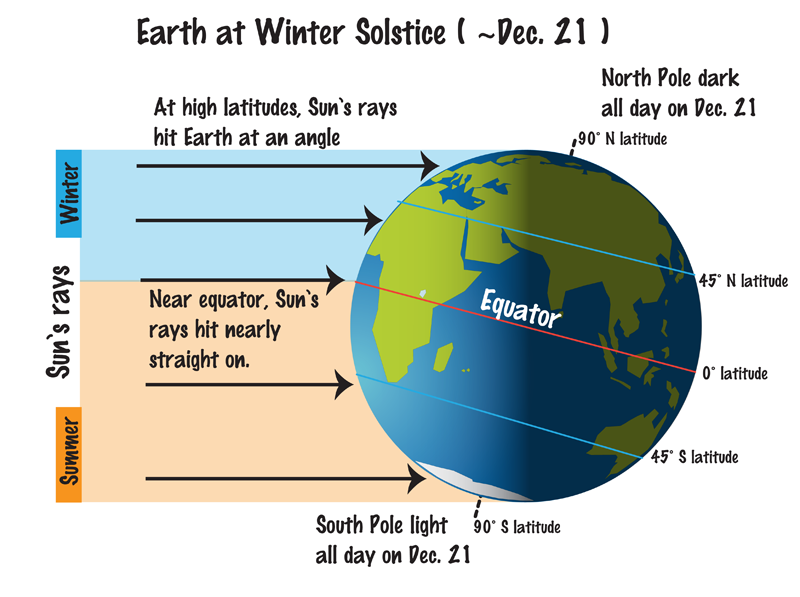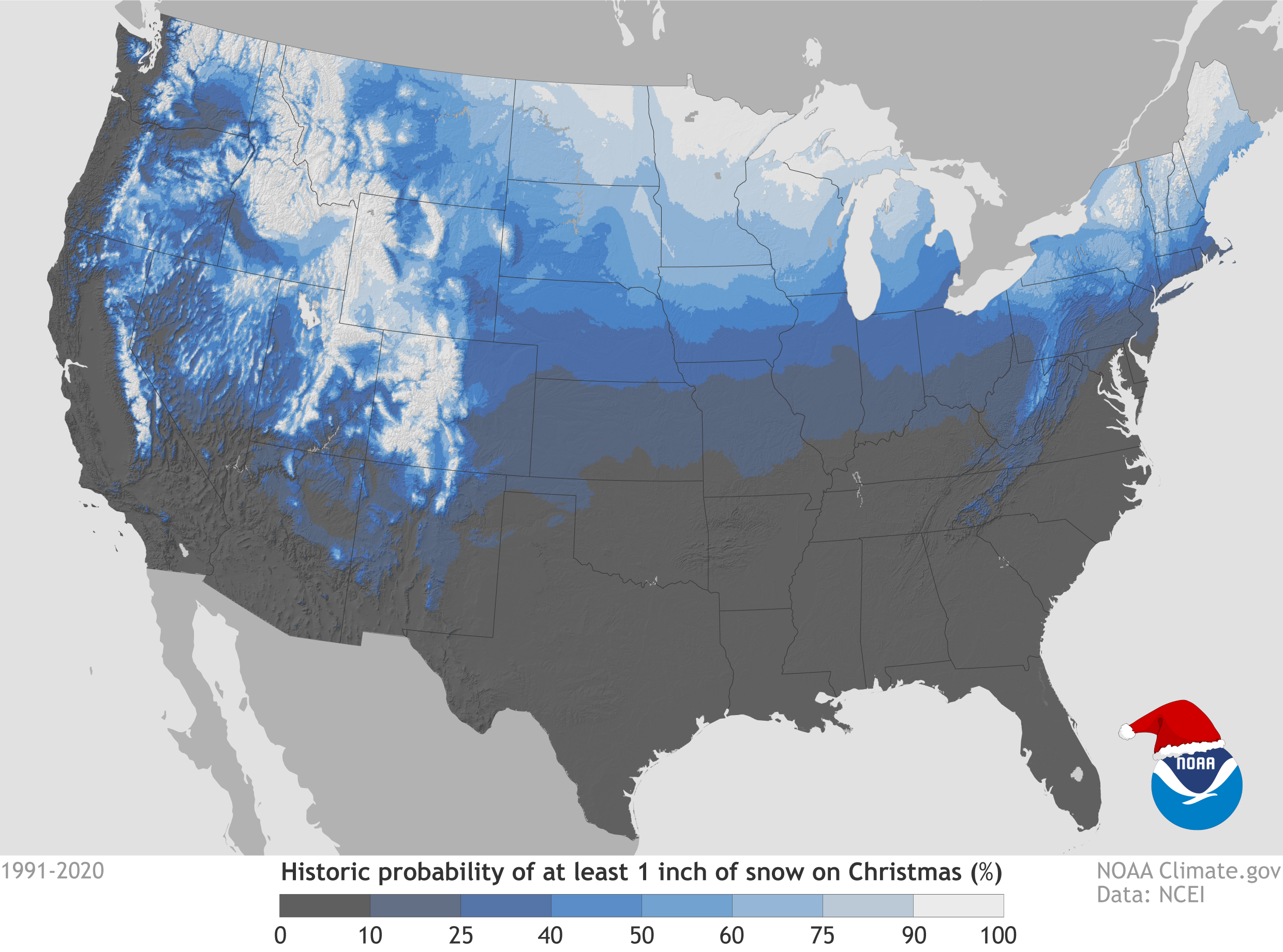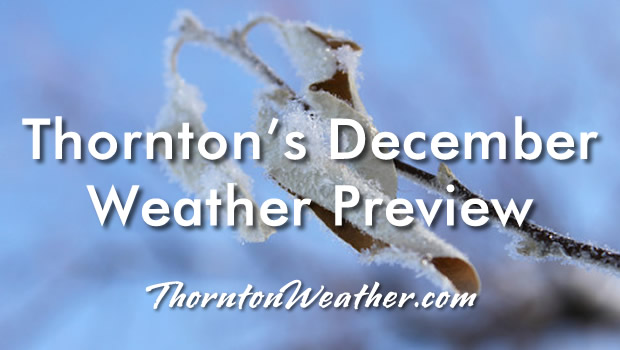The period around the Christmas holiday has historically been a pretty eventful one for the Denver metro area. Our look back at this week in Denver weather history showcases a wide variety of extreme conditions. From powerful, damaging winds to extreme cold to monstrous blizzards, we can and have seen it all.
From the National Weather Service:
17-24
In 1924…a prolonged cold spell occurred after mild temperatures during the first half of the month. Most low temperatures dipped below zero with the coldest reading of 15 degrees below zero occurring on the 24th. The high temperature of only 5 degrees on the 18th was a record low maximum for the date.
18-24
In 1998…a vigorous cold front with north winds gusting as high as 38 mph at Denver International Airport on the 18th dropped temperatures from a high of 51 degrees to a low of just 6 degrees before midnight. The arctic air mass that settled over metro Denver produced intermittent light snow and a week-long protracted cold spell that caused low temperatures to plunge well below zero for 6 consecutive nights. The coldest temperature was 19 degrees below zero on the morning of the 22nd. High temperatures climbed only into the single digits on 4 consecutive days…from the 19th through the 22nd. At least 15 people…mostly homeless… Were treated for hypothermia at area hospitals. The bitter cold weather was responsible…either directly or indirectly… For at least 5 fatalities. Three of the victims died directly from exposure. The cold weather also caused intermittent power outages. Following the cold snap… Thawing water pipes cracked and burst in several homes and businesses…causing extensive damage. Only one temperature record was set. The high temperature of only 7 degrees on the 19th set a record low maximum for the date.
19-23
In 1990…a surge of very cold arctic air invaded metro Denver. Many temperature records were broken as the mercury remained at or below zero for 85.5 hours at Stapleton International Airport…making it the third longest period of subzero readings in 118 years of record keeping. On the morning of the 22nd…the mercury plunged to 25 degrees below zero…which equaled the all-time record low temperature for the month set on December 24…1876. In the foothills southwest of Denver at tiny town…the mercury plunged to 33 degrees below zero on the morning of the 21st. On the same morning at Castle Rock the temperature dipped to 26 degrees below zero. During the period…other daily temperature records were set at Denver…including: record low maximum of 3 degrees below zero on the 20th and a record low of 17 degrees below zero on the 23rd. The record low was equaled with 16 degrees below zero on the 20th and 21 degrees below zero on the 21st. Snowfall totaled 2.7 inches at Stapleton International Airport from the 19th through the 21st.
20-22
In 1933…strong downslope winds produced a warm spell. Low temperatures of 43 degrees on both the 20th and 21st and 41 degrees on the 22nd were record high minimums for those dates. High temperature of 67 degrees on the 21st was a record maximum for the date. High temperatures of 56 degrees on the 20th and 69 degrees on the 22nd were not records; however…the 69 degrees was the warmest of the month. West to northwest winds were sustained to 20 and 24 mph on the 21st and 22nd respectively.
20-23
In 1918…light snowfall on each day totaled 12.0 inches over downtown Denver. Northeast winds were sustained to 16 mph on the 21st.
20-25
In 1983…an extremely bitter cold spell occurred. The temperature remained below zero for 115 hours in Denver… The longest sub-zero period on record. The mercury dipped to 21 degrees below zero on the 21st…the coldest recorded temperature in over 20 years. The cold was accompanied by winds that plunged chill factors to 50 to 70 degrees below zero. Two people froze to death in Denver; both were found outside dead of exposure. Numerous cases of frostbite were reported. Hundreds of water pipes broke from the intense cold…water mains and natural gas lines also fractured…and electricity consumption reached record levels. Light snow totaling 5.8 inches fell at times…and holiday traffic was delayed at Stapleton International Airport for several hours. Eight daily temperature records were set at the time. The all-time record low maximum temperature for the month of 8 degrees below zero on the 21st still stands today. Other temperature records still standing include record low maximum temperatures of 5 degrees below zero on both the 22nd and 23rd and 4 degrees below zero on the 24th.
21-22
In 1969…strong winds raked the eastern foothills in Boulder and Jefferson counties. Wind gusts to 115 mph were recorded at the National Center for Atmospheric Research in Boulder…while in downtown Boulder winds gusted to 75 mph. Some damage occurred.
In 1981…a snow storm dumped 3 to 8 inches of snow across eastern Colorado. Snowfall totaled 6.8 inches at Stapleton International Airport where north winds gusted to only 17 mph.
In 2011…large scale lift from an upper level low combined with a deep easterly upslope flow behind a cold front to produce heavy snow in and near the Front Range foothills and Palmer Divide. Storm totals ranged from 1.5 to 3 feet in the Front Range foothills…with 1 to 1.5 feet along the urban corridor. In the Front Range foothills and Palmer Divide…storm totals included: 36.5 inches…7 miles southwest of Boulder; 32 inches…12 miles northwest of Golden; 28 inches at Genesee; 24.5 inches…3 miles west of Jamestown; 23 inches at Bergen Park; 21 inches at Evergreen and Gross Reservoir; 19 inches near Eldorado Springs and 3 miles west-southwest of Conifer; 17 inches…4 miles south- southwest of Tiny Town; and 13.5 inches…15 miles north of Elizabeth. Along the urban corridor…storm totals included: 18 inches in Golden; 14.5 inches in Boulder…13 inches at the National Weather Service in Boulder; 12.5 inches…5 miles south-southwest of Arapahoe Park; 12 inches at Lone Tree; 11.5 inches in Broomfield; 11 inches in Arvada…4 miles northwest of Elbert…Niwot and Wheatridge; 10 inches in northwest Denver; with 7.3 inches at Denver International Airport.
21-23
In 1924…heavy snowfall totaled 7.9 inches over downtown Denver. During the storm north to northeast winds were sustained to 21 mph. Temperatures were quite cold…ranging from a high of 24 degrees on the 21st to a low of 5 degrees below zero on the 23rd.
In 1964…high winds were recorded along the eastern foothills. A wind gust to 100 mph was registered at Jefferson County Airport near Broomfield. In Boulder… Where many thousands of dollars in damage occurred…warm Chinook winds gusted in excess of 45 mph downtown. A wind gust to 82 mph was recorded at the National Center for Atmospheric Research in Boulder. Heavy damage to power lines…homes…and roads was reported at Evergreen…Golden… And Boulder. Several people were injured by wind-caused accidents. West winds gusted to 53 mph on the 22nd and to 51 mph on the 23rd at Stapleton International Airport where some blowing dust occurred. The Chinook winds warmed temperatures in Denver to highs of 68 degrees on the 22nd and 71 degrees on the 23rd.
Continue reading December 22 to December 28: This Week in Denver Weather History






































































































